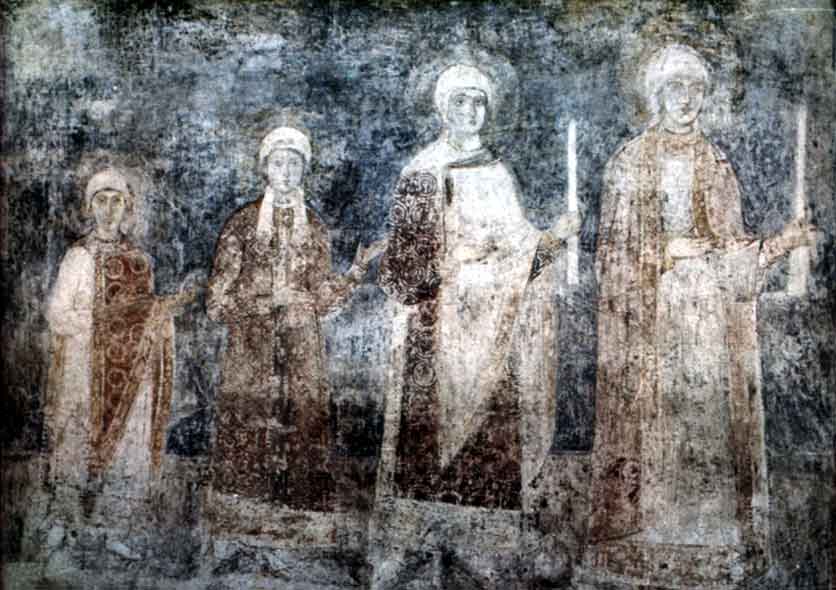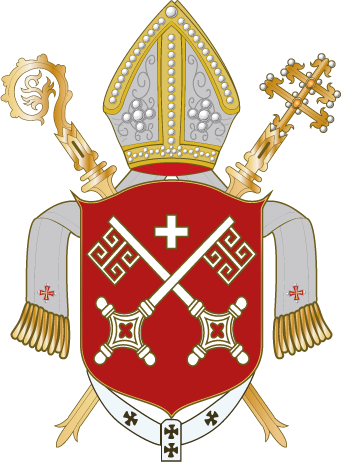|
Emund The Old
Emund the Old or Edmund (Swedish: ''Emund den gamle'', Old Swedish: ''Æmunðær gamlæ'', ''Æmunðær gammal'', ''Æmunðær slemæ'') was King of Sweden from c. 1050 to c. 1060. His short reign was characterised by disputes with the Archbishopric of Bremen over church policies, and a historically debated delimitation of the Swedish-Danish border. Way to the throne Emund was the son of Olof Skötkonung, the first Christian ruler of Sweden. His mother was a co-wife, Edla, daughter of a Slavic chief from the southern coast of the Baltic Sea. He had two uterine sisters called Astrid and Holmfrid. His half-siblings, born by Olof's legitimate Queen Estrid of the Obotrites, were Anund Jacob and Ingegerd. According to the 13th-century historian Snorri Sturluson, Estrid was ill-tempered and treated her stepchildren poorly. King Olof later sent Emund to be raised with his mother's Slavic family. While staying there he failed to hold on to the Christian religion. Olof was succeeded by ... [...More Info...] [...Related Items...] OR: [Wikipedia] [Google] [Baidu] |
List Of Swedish Monarchs
This is a list of Swedish kings, queens, regents and viceroys of the Kalmar Union. History The earliest record of what is generally considered to be a Swedish king appears in Tacitus' work '' Germania'', c. 100 AD (the king of the Suiones). However, due to scant and unreliable sources before the 11th century, lists of succession traditionally start in the 10th century with king Olof Skötkonung, and his father Eric the Victorious, who also were the first Swedish kings to be baptized. There are, however, lists of Swedish pagan monarchs with far older dates, but in many cases these kings appear in sources of disputed historical reliability. These records notably deal with the legendary House of Yngling, and based on the Danish chronicler Saxo Grammaticus, Eric the Victorious and Olof Skötkonung have often been classified as belonging to the Swedish house of Ynglings, tracing them back to Sigurd Hring and Ragnar Lodbrok (whom Saxo considered to belong to the House of Yngling). Ho ... [...More Info...] [...Related Items...] OR: [Wikipedia] [Google] [Baidu] |
Ingegerd Olofsdotter Of Sweden
Ingegerd Olofsdotter of Sweden, also known as Irene, Anna and Saint Anna (1001 – 10 February 1050), was a Swedish princess and a Grand Princess of Kiev. She was the daughter of Swedish King Olof Skötkonung and Estrid of the Obotrites and the consort of Yaroslav I the Wise of Kiev. She is venerated as a saint in the Eastern Orthodox Church. Ingegerd or Saint Anna is often confused with the mother of Saint Vladimir “the Enlightener” of the Rus. This is mainly because Ingegerd and Yaroslav also had a son named Vladimir. However, Saint Vladimir was the father of Ingegerd’s husband Yaroslav I “the Wise”, thus making her Saint Vladimir’s daughter-in-law. Saint Vladimir was the son of Sviatoslav and Malusha. Life Ingegerd was born a princess in the court of King Olof Skötkonung. In 1015, after Olaf II of Norway assumed the throne as King of Norway, he proposed a royal marriage alliance. In 1016, noblemen of both countries tried to arrange a marriage betwe ... [...More Info...] [...Related Items...] OR: [Wikipedia] [Google] [Baidu] |
Scythia
Scythia (Scythian: ; Old Persian: ; Ancient Greek: ; Latin: ) or Scythica (Ancient Greek: ; Latin: ), also known as Pontic Scythia, was a kingdom created by the Scythians during the 6th to 3rd centuries BC in the Pontic–Caspian steppe. History Background Origins of the Scythians The Scythians originated in Central Asia possibly around the 9th century BC, and they arrived in the Caucasian Steppe in the 8th and 7th centuries BC as part of a significant movement of the nomadic peoples of the Eurasian Steppe. This movement started when another nomadic Iranian tribe closely related to the Scythians, either the Massagetae or the Issedones, migrated westwards, forcing the Early Scythians to the west across the Araxes river, following which the Scythians moved into the Caspian Steppe, where they conquered the territory of the Cimmerians, who were also a nomadic Iranian people closely related to the Scythians, and assimilated most of them while displacing the rest, before settling ... [...More Info...] [...Related Items...] OR: [Wikipedia] [Google] [Baidu] |
Terra Feminarum
Terra feminarum ("''Women's Land''") is a name for an area in Medieval Northern Europe that appears in ''Gesta Hammaburgensis Ecclesiae Pontificum'' (Deeds of Bishops of the Hamburg Church) by Adam of Bremen 1075 AD. ''Terra Feminarum'' in ''Gesta'' "Woman Land", terra feminarum, appears four times in various chapters of ''Gesta Hammaburgensis Ecclesiae Pontificum'' (Deeds of Bishops of the Hamburg Church) by Adam of Bremen in 1075 AD. :''"In the meantime Swedes (Sueones), that had expelled their bishop, got a divine revenge. And at first King's son called Anund, whose father had sent him to enlarge his kingdom, after arriving to Woman Land (patriam feminarum), whom we consider to be Amazons, was killed along with his army from poison, that they had mixed to the spring water." (III 15)'' :''"After that come the Swedes (Sueones) that rule wide areas up until Woman Land (terram feminarum). Living east of these are said to be Wizzi, Mirri, Lamiy, Scuti and Turci up until the border o ... [...More Info...] [...Related Items...] OR: [Wikipedia] [Google] [Baidu] |
Adalvard The Elder
Adalvard the Elder (dead c. 1064) was a German clergyman. He was first the dean of Bremen, but he was sent to the diocese of Skara in Sweden, as bishop during the early 1060s. Adam of Bremen wrote well of him, and tells that he made missionary attempts in Värmland. In Skara Cathedral a chalice was found with the inscription ''Adalwardus Peccator'' (Adalvard the sinner). He was succeeded by Adalvard the Younger Adalvard the Younger (dead before 1072) was a German missionary bishop from Bremen who was active in Sigtuna, in Sweden, in the 1060s. According to Adam of Bremen, Adalvard tried to make the Swedish king Stenkil close the great temple at Uppsala .... Literature * *{{citation, first=Göran , last=Tegnér , contribution=Adalvardskalken , url=http://histvarld.historiska.se/histvarld/sok/artikel.asp?id=10007 , title=Vikingatidens ABC , year=1995 , url-status=dead , archiveurl=https://web.archive.org/web/20070902074955/http://histvarld.historiska.se/histvarld/sok/artikel.asp?i ... [...More Info...] [...Related Items...] OR: [Wikipedia] [Google] [Baidu] |
Archbishop Of Bremen
This list records the bishops of the Archdiocese of Bremen, Roman Catholic diocese of Bremen (german: link=no, Bistum Bremen), supposedly a suffragan of the Archdiocese of Cologne, Archbishopric of Cologne, then of the bishops of Bremen, who were in personal union archbishops of Hamburg (simply titled Archbishops of Hamburg-Bremen), later simply titled archbishops of Bremen, since 1180 simultaneously officiating as rulers of princely rank (prince-archbishop) in the Prince-Archbishopric of Bremen (german: link=no, Erzstift Bremen; est. 1180 and secularised in 1648), a state of imperial immediacy within the Holy Roman Empire. Bremen and Hamburg were the seats of the Cathedral chapter, chapters at Bremen Cathedral and Hamburg Concathedral, while the incumbents used to reside in Vörde Castle, their castle in Bremervörde, Vörde since 1219. Titles of the incumbents of the Bremian See Not all incumbents of the Bremian See were Holy Roman Empire, imperially invested princely power a ... [...More Info...] [...Related Items...] OR: [Wikipedia] [Google] [Baidu] |
Gniezno
Gniezno (; german: Gnesen; la, Gnesna) is a city in central-western Poland, about east of Poznań. Its population in 2021 was 66,769, making it the sixth-largest city in the Greater Poland Voivodeship. One of the Piast dynasty's chief cities, it was the first historical capital of Poland in the 10th century and early 11th century, and it was mentioned in 10th-century sources, possibly including the Dagome Iudex, as the capital of Piast Poland. Gniezno is the seat of the Roman Catholic Archdiocese of Gniezno, the country's oldest archdiocese, founded in 1000, and its archbishop is the primate of Poland, making the city the country's ecclesiastical capital. The city is the administrative seat of Gniezno County (''powiat''). Geography Gniezno is one of the historic centers of the Greater Poland region, the cradle of the Polish state. Alike Rome, Gniezno was founded on seven hills, including the , which is the location of the Gniezno Cathedral, and the Panieńskie Hill, which is ... [...More Info...] [...Related Items...] OR: [Wikipedia] [Google] [Baidu] |
Polish People
Poles,, ; singular masculine: ''Polak'', singular feminine: ''Polka'' or Polish people, are a West Slavic nation and ethnic group, who share a common history, culture, the Polish language and are identified with the country of Poland in Central Europe. The preamble to the Constitution of the Republic of Poland defines the Polish nation as comprising all the citizens of Poland, regardless of heritage or ethnicity. The majority of Poles adhere to Roman Catholicism. The population of self-declared Poles in Poland is estimated at 37,394,000 out of an overall population of 38,512,000 (based on the 2011 census), of whom 36,522,000 declared Polish alone. A wide-ranging Polish diaspora (the '' Polonia'') exists throughout Europe, the Americas, and in Australasia. Today, the largest urban concentrations of Poles are within the Warsaw and Silesian metropolitan areas. Ethnic Poles are considered to be the descendants of the ancient West Slavic Lechites and other tribes that inhabite ... [...More Info...] [...Related Items...] OR: [Wikipedia] [Google] [Baidu] |
Sigfrid
Siegfried is a German-language male given name, composed from the Germanic elements ''sig'' "victory" and ''frithu'' "protection, peace". The German name has the Old Norse cognate ''Sigfriðr, Sigfrøðr'', which gives rise to Swedish ''Sigfrid'' (hypocorisms ''Sigge, Siffer''), Danish/Norwegian ''Sigfred''. In Norway, ''Sigfrid'' is given as a feminine name. official statistics at Statistisk Sentralbyrå, National statistics office of Norway, http://www.ssb.no; Statistiska Centralbyrån, National statistics office of Sweden, http://www.scb.se/ The name is medieval and was borne by the legendary dragon-slayer also known as . It did survive in marginal use into the modern period, but after 1876 it enjoyed renewed popularity d ... [...More Info...] [...Related Items...] OR: [Wikipedia] [Google] [Baidu] |
Osmund (missionary Bishop)
Osmund or Asmund ( la, Osmundus, ''Aesmundus''; Old Swedish: ''Asmuðær'') was a missionary bishop in Sweden in the mid-11th century. Born at an unknown date c. 1000, probably in England; educated at the schools of Bremen (shortly?) after 1014 (when his sponsor first became a 'bishop of the Norwegians'); served as court-bishop to King Emund the Old of Sweden (who reigned as sole king c. 1050 – c. 1060); was expelled from Sweden and travelled to England via Bremen probably in 1057; died as a monk of Ely in the abbacy of Thurstan (1066 - c.1072). Osmund, missionary bishop in Sweden and monk of Ely, is not to be confused with Saint Osmund, Bishop of Salisbury (d. 1099). He is also to be distinguished from Amund (d. 1082), the successor of Saint David as Bishop of Västerås and from the Bishop Osmund who, as a monk of Fécamp, signed a privilege in 1017. It is not entirely out of the question that the rune-carver Asmund Karesson, who produced Christian memorials in central Sw ... [...More Info...] [...Related Items...] OR: [Wikipedia] [Google] [Baidu] |
Gesta Hammaburgensis Ecclesiae Pontificum
''Gesta Hammaburgensis ecclesiae pontificum'' (Medieval Latin for ''"Deeds of the Bishops of Hamburg"'') is a historical treatise written between 1073 and 1076 by Adam of Bremen, who made additions (''scholia'') to the text until his death (possibly 1081; before 1085). It is one of the most important sources of the medieval history of Northern Europe, and the oldest textual source reporting the discovery of coastal North America. It covers the entire period known as the Viking Age, from the foundation of the bishopric under Willehad in 788 until the rule of prince-bishop Adalbert in Adam's own time (1043–1072). The text focuses on the history of the Hamburg-Bremen diocese and its bishops. As the bishops had jurisdiction over the missions to Scandinavia, it also gives a report of the Norse paganism of the period. The existence of the work was forgotten in the later medieval period, until it was re-discovered in the late 16th century in the library of Sorø Abbey, Denmar ... [...More Info...] [...Related Items...] OR: [Wikipedia] [Google] [Baidu] |







